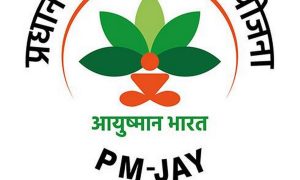India’s pension-sector provides a flexible mode of old-age income security not only for salaried employees but also to the common person by making available the National Pension System plus Atal Pension Yojana.
National Pension System (NPS) offers market linked returns to subscribers and helps them save money for retirement. There are seven various fund options including equity and debt and the returns vary as per the asset class. As a NPS subscriber one may divide money into equity funds managed by different fund managers and across government and state government securities. In addition, there is the Atal Pension Yojana (APY) that offers fixed returns in the form of pension after the subscriber turns 60.
As on March 31, 2022, NPS funds representing equity and debt have generated up to 12 per cent while Atal Pension Yojana has registered 9.4 per cent returns since inception. PFRDA in a recently released working paper series titled ‘Perspectives on the Pension Sector in India’ provides a clear picture to investors focussing on their retirement needs including the returns generated by the funds in NPS and APY.
Read More: Got bank note with 786 serial number? You can earn up to Rs 3 lakh by selling it online, here’s how
In India, for the non-government organized sector, it has mostly been the employee provident fund (EPF), offered by the Employees’ Provident Fund Organization (EPFO), to which employers also are required to make a co-contribution. In addition, there is a pension component in the form of Employees’ Pension Scheme (EPS).
Apart from this, insurance companies offer annuity-based pension and some mutual funds provide medium- to long-term retirement-focussed schemes.
Framework of pension system
India’s pension-sector provides a flexible mode of old-age income security not only for salaried employees but also to the common person by making available the National Pension System (NPS) plus Atal Pension Yojana (APY).
The entire pension system in India can be denoted as three pillars.
Pillar-I: Non-contributory basic social pension financed mostly by the government.
Pillar-II: Occupational contributory pension schemes which could either be voluntary or mandatory. It could be a defined contribution (DC) or defined benefit (DB) plan. The National Pension System (NPS) which was made mandatory for government employees joining services from 2004 falls under Pillar-II and is a defined contribution (DC) scheme.
Pillar-III: Voluntary fully funded personal pension plans.
The National Pension System for government employees is a defined contribution plan with co-contribution from the government. It was opened to all citizens in 2009 irrespective of their employment status. In other words, anyone in the age group of 18-70 years could open an NPS account. Subsequently, NPS was opened to the corporate sector in 2011. So, corporates have a choice to either go with EPFO or NPS for their employees.
Annual rates of return in NPS, APY schemes
As of March 31, 200, the annual rates of return in various NPS schemes since inception is in the range 9.0-12.7 percent. In the last five years the range has been 8.1-13.3 percent. As could be expected, the equity-oriented NPS scheme has clocked an annual return of 13.3 percent. An ultra-conservative government-securities-oriented NPS scheme has posted an annual return of over 8 percent. APY has also posted high average annual return of 8.8 percent in the last 5 years, with annual return since inception being 9.4 percent.
Read More: Mutual Funds vs PMS: Comparison, returns, benefits; expert insights

Workforce Data in India
India has an estimated population of 138 crore. For 2019-20, labour force was estimated at 56.3 crore, out of which 53.5 crore were in employment. However, employment in the formal sector, where people can have some form of access to social security, is relatively small at 5.9 crore.
The bulk of the labour force, estimated 43.2 crore, is in the unorganized informal sector that does not have any statutory social security benefit. For the unorganized informal sector there was no structured pension scheme till the introduction of Atal Pension Yojana (APY) in 2015.





































